Abstract
The epidemiology of oral clefts was studied in the geographical area covered by our registry of congenital malformations. For each of the 207 new cases studied during the period 1979 to 1987, more than 50 factors were compared in probands and controls. The incidence of oral clefts was 1.75 per 1000, with cleft lip/palate (CL(P] 0.98 and cleft palate only (CP) 0.77 per 1000. A total of 8.2% of cleft cases were stillbirths and 5.3% were induced abortions. The more common types of associated malformations in the 76 affected cases (36.7%) with at least one anomaly other than oral cleft were neural tube defects and skeletal malformations. At birth, infants with oral clefts and other malformations were smaller, weighed less, and their head circumference was lower than in controls. Placental weight was also lower than in controls. Pregnancies with oral clefts were more often complicated by threatened abortion, polyhydramnios, and arterial hypertension. There was a significant association between clefting and consanguinity; heritability of CL(P) was 81% and first degree relatives of probands had more than three times the prevalence of noncleft malformations as controls. These results are of relevance to genetic counselling.
Full text
PDF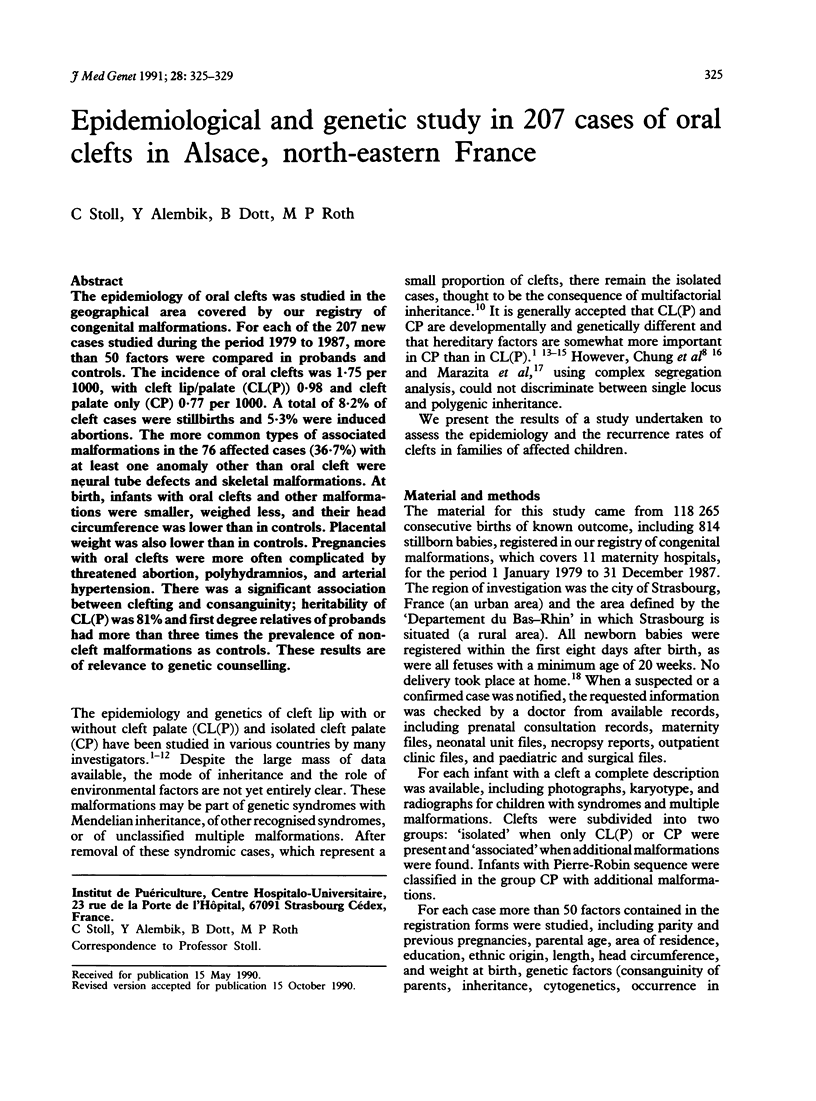
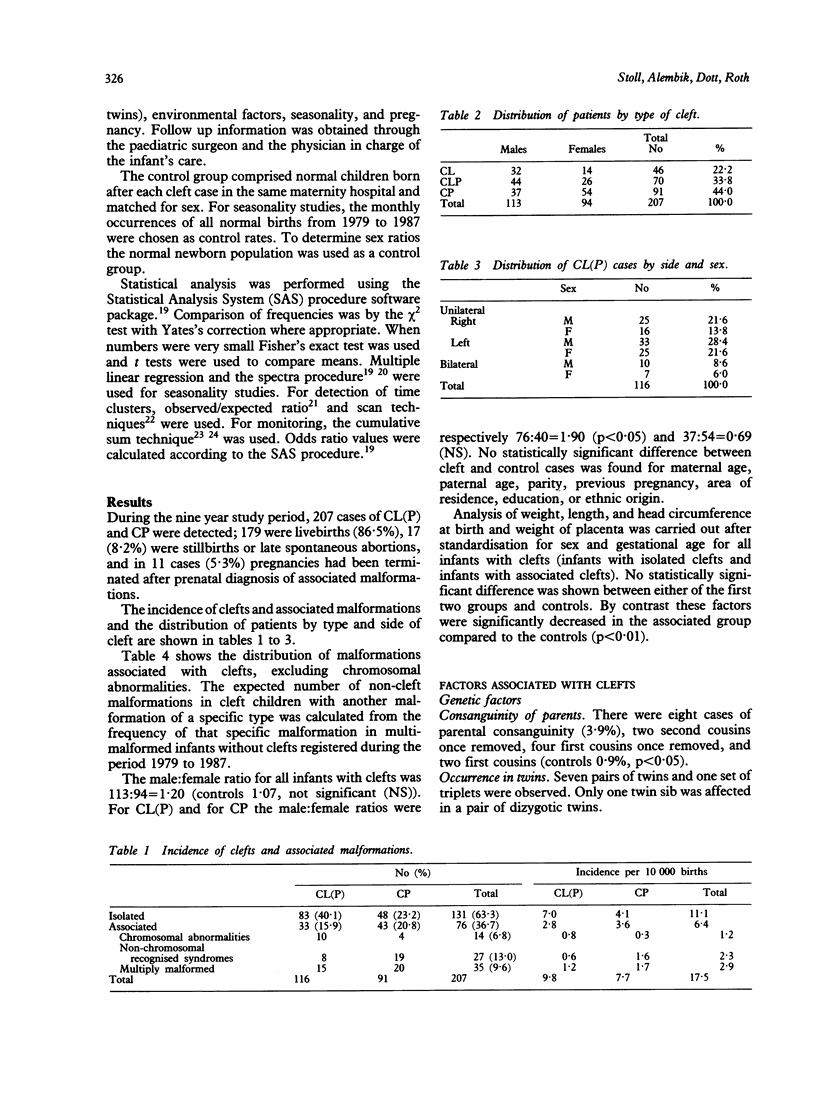
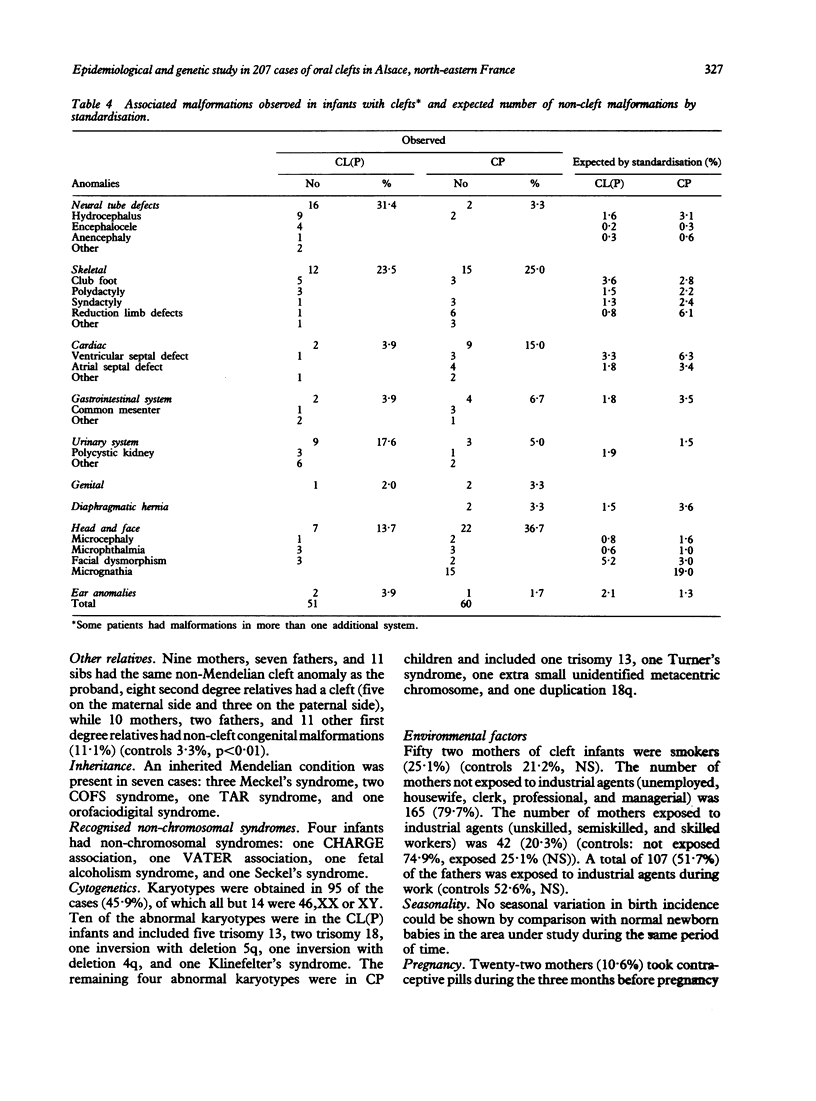
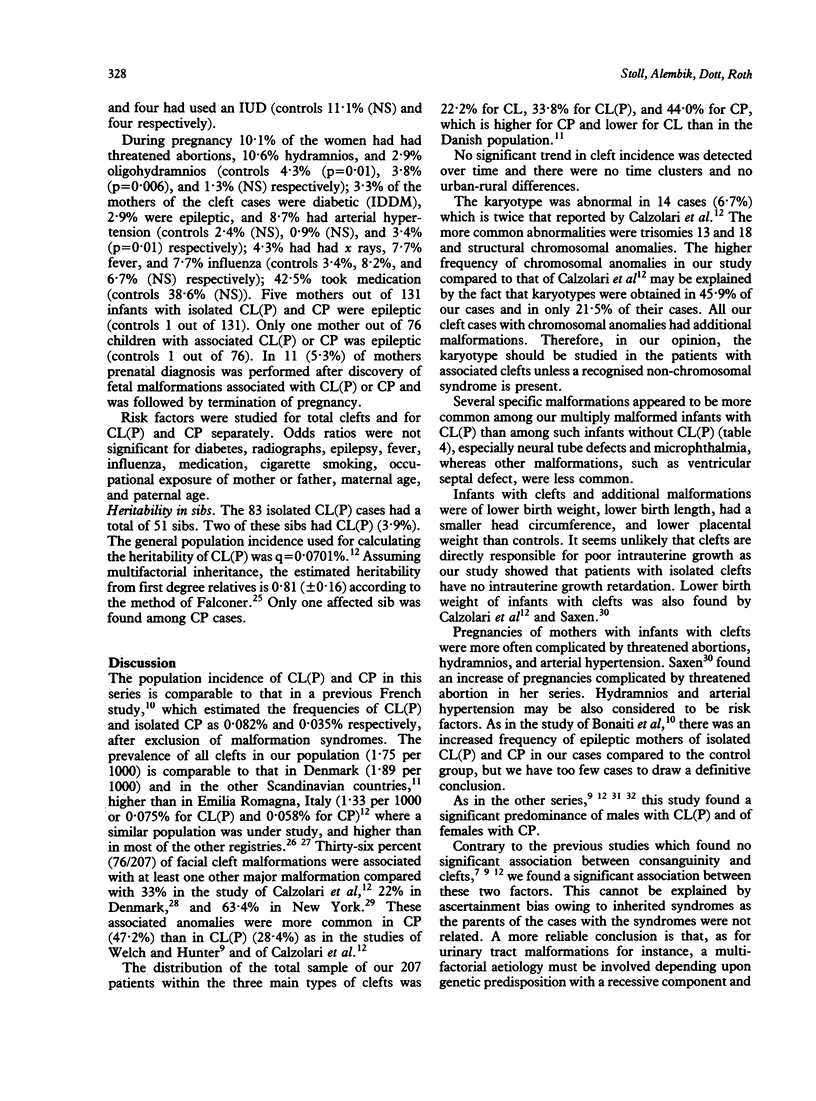
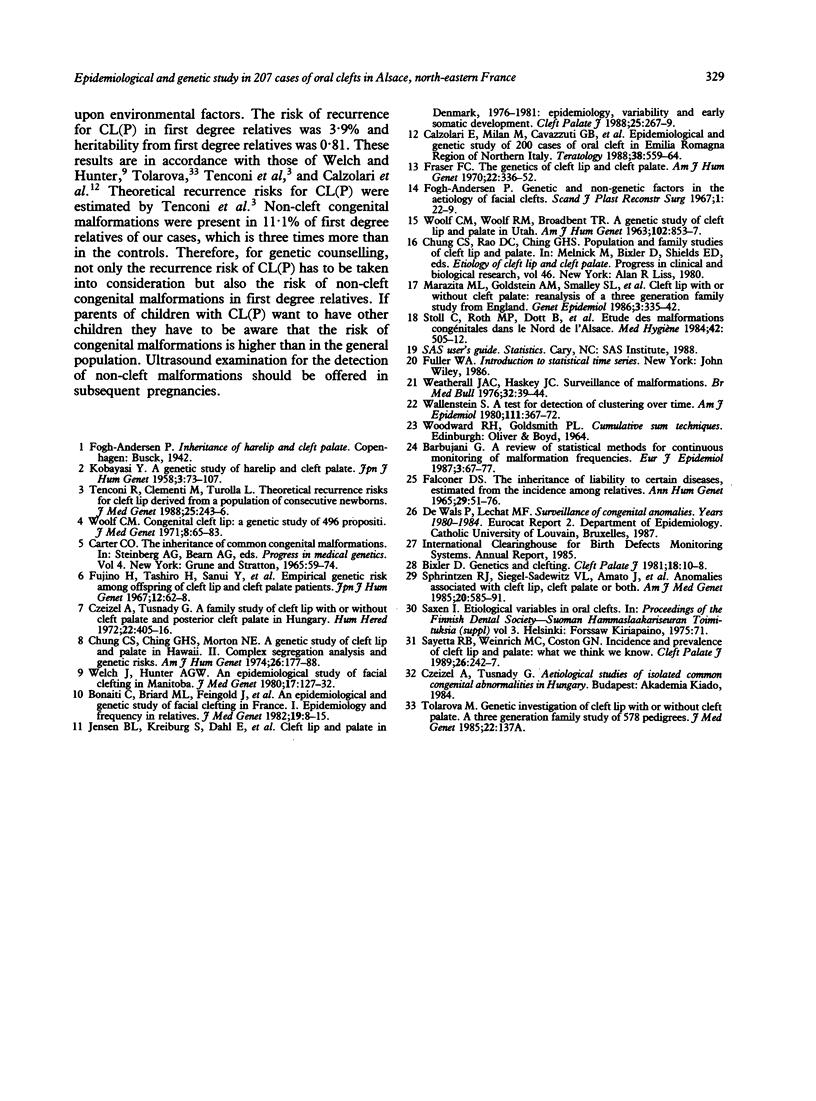
Selected References
These references are in PubMed. This may not be the complete list of references from this article.
- Barbujani G. A review of statistical methods for continuous monitoring of malformation frequencies. Eur J Epidemiol. 1987 Mar;3(1):67–77. doi: 10.1007/BF00145075. [DOI] [PubMed] [Google Scholar]
- Bixler D. Genetics and clefting. Cleft Palate J. 1981 Jan;18(1):10–18. [PubMed] [Google Scholar]
- Bonaiti C., Briard M. L., Feingold J., Pavy B., Psaume J., Migne-Tufferaud G., Kaplan J. An epidemiological and genetic study of facial clefting in France. I. Epidemiology and frequency in relatives. J Med Genet. 1982 Feb;19(1):8–15. doi: 10.1136/jmg.19.1.8. [DOI] [PMC free article] [PubMed] [Google Scholar]
- Calzolari E., Milan M., Cavazzuti G. B., Cocchi G., Gandini E., Magnani C., Moretti M., Garani G. P., Salvioli G. P., Volpato S. Epidemiological and genetic study of 200 cases of oral cleft in the Emilia Romagna region of northern Italy. Teratology. 1988 Dec;38(6):559–564. doi: 10.1002/tera.1420380603. [DOI] [PubMed] [Google Scholar]
- Chung C. S., Ching G. H., Morton N. E. A genetic study of cleft lip and palate in Hawaii. II. Complex segregation analysis and genetic risks. Am J Hum Genet. 1974 Mar;26(2):177–188. [PMC free article] [PubMed] [Google Scholar]
- Czeizel A., Tusnady G. A family study on cleft lip with or without cleft palate and posterior cleft palate in Hungary. Hum Hered. 1972;22(5):405–416. doi: 10.1159/000152518. [DOI] [PubMed] [Google Scholar]
- Fraser F. C. The genetics of cleft lip and cleft palate. Am J Hum Genet. 1970 May;22(3):336–352. [PMC free article] [PubMed] [Google Scholar]
- Fujino H., Tashiro H., Sanui Y., Tanaka K. Empirical genetic risk among offspring of cleft lip and cleft palate patients. Jinrui Idengaku Zasshi. 1967 Oct;12(2):62–68. [PubMed] [Google Scholar]
- Marazita M. L., Goldstein A. M., Smalley S. L., Spence M. A. Cleft lip with or without cleft palate: reanalysis of a three-generation family study from England. Genet Epidemiol. 1986;3(5):335–342. doi: 10.1002/gepi.1370030506. [DOI] [PubMed] [Google Scholar]
- Sayetta R. B., Weinrich M. C., Coston G. N. Incidence and prevalence of cleft lip and palate: what we think we know. Cleft Palate J. 1989 Jul;26(3):242–248. [PubMed] [Google Scholar]
- Shprintzen R. J., Siegel-Sadewitz V. L., Amato J., Goldberg R. B. Anomalies associated with cleft lip, cleft palate, or both. Am J Med Genet. 1985 Apr;20(4):585–595. doi: 10.1002/ajmg.1320200404. [DOI] [PubMed] [Google Scholar]
- Tenconi R., Clementi M., Turolla L. Theoretical recurrence risks for cleft lip derived from a population of consecutive newborns. J Med Genet. 1988 Apr;25(4):243–246. doi: 10.1136/jmg.25.4.243. [DOI] [PMC free article] [PubMed] [Google Scholar]
- Wallenstein S. A test for detection of clustering over time. Am J Epidemiol. 1980 Mar;111(3):367–372. doi: 10.1093/oxfordjournals.aje.a112908. [DOI] [PubMed] [Google Scholar]
- Weatherall J. A., Haskey J. C. Surveillance of malformations. Br Med Bull. 1976 Jan;32(1):39–44. doi: 10.1093/oxfordjournals.bmb.a071321. [DOI] [PubMed] [Google Scholar]
- Welch J., Hunter A. G. An epidemiological study of facial clefting in Manitoba. J Med Genet. 1980 Apr;17(2):127–132. doi: 10.1136/jmg.17.2.127. [DOI] [PMC free article] [PubMed] [Google Scholar]
- Woolf C. M. Congenital cleft lip. A genetic study of 496 propositi. J Med Genet. 1971 Mar;8(1):65–83. doi: 10.1136/jmg.8.1.65. [DOI] [PMC free article] [PubMed] [Google Scholar]


